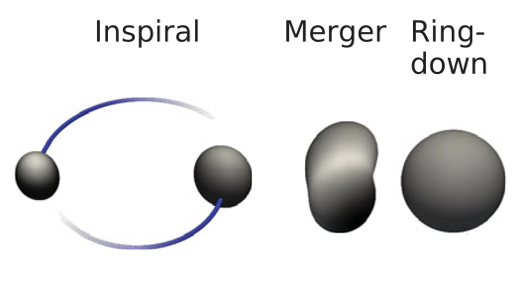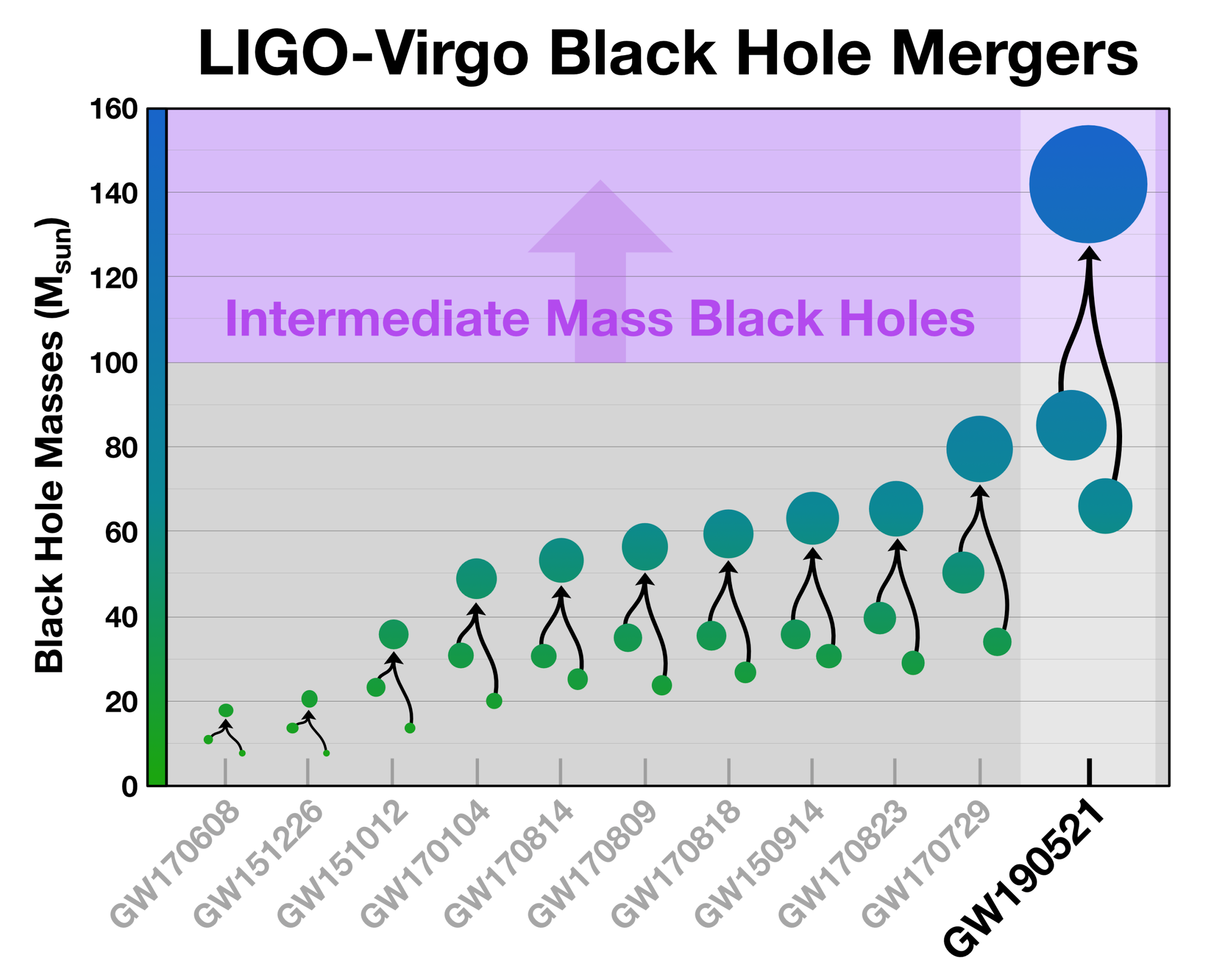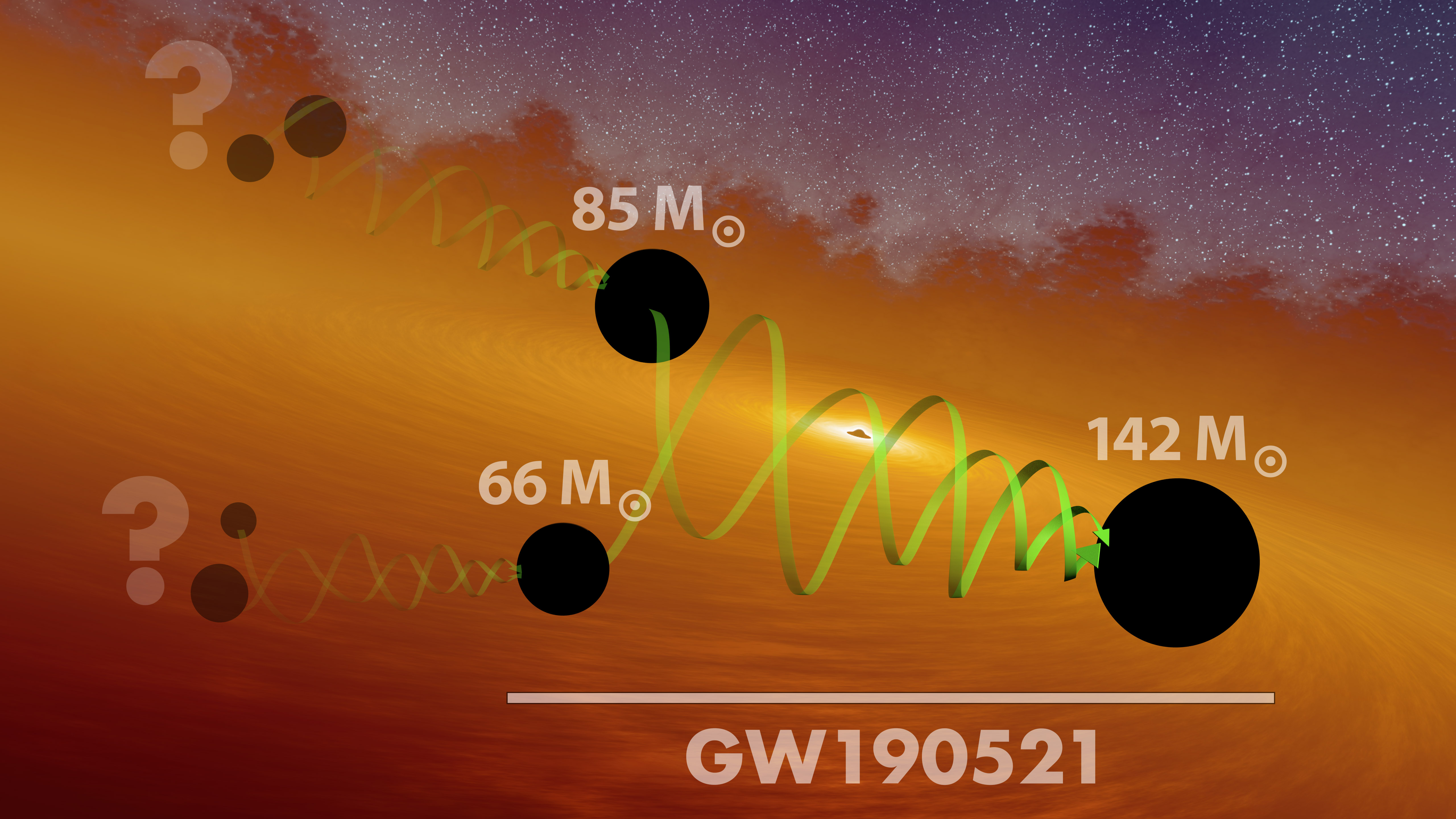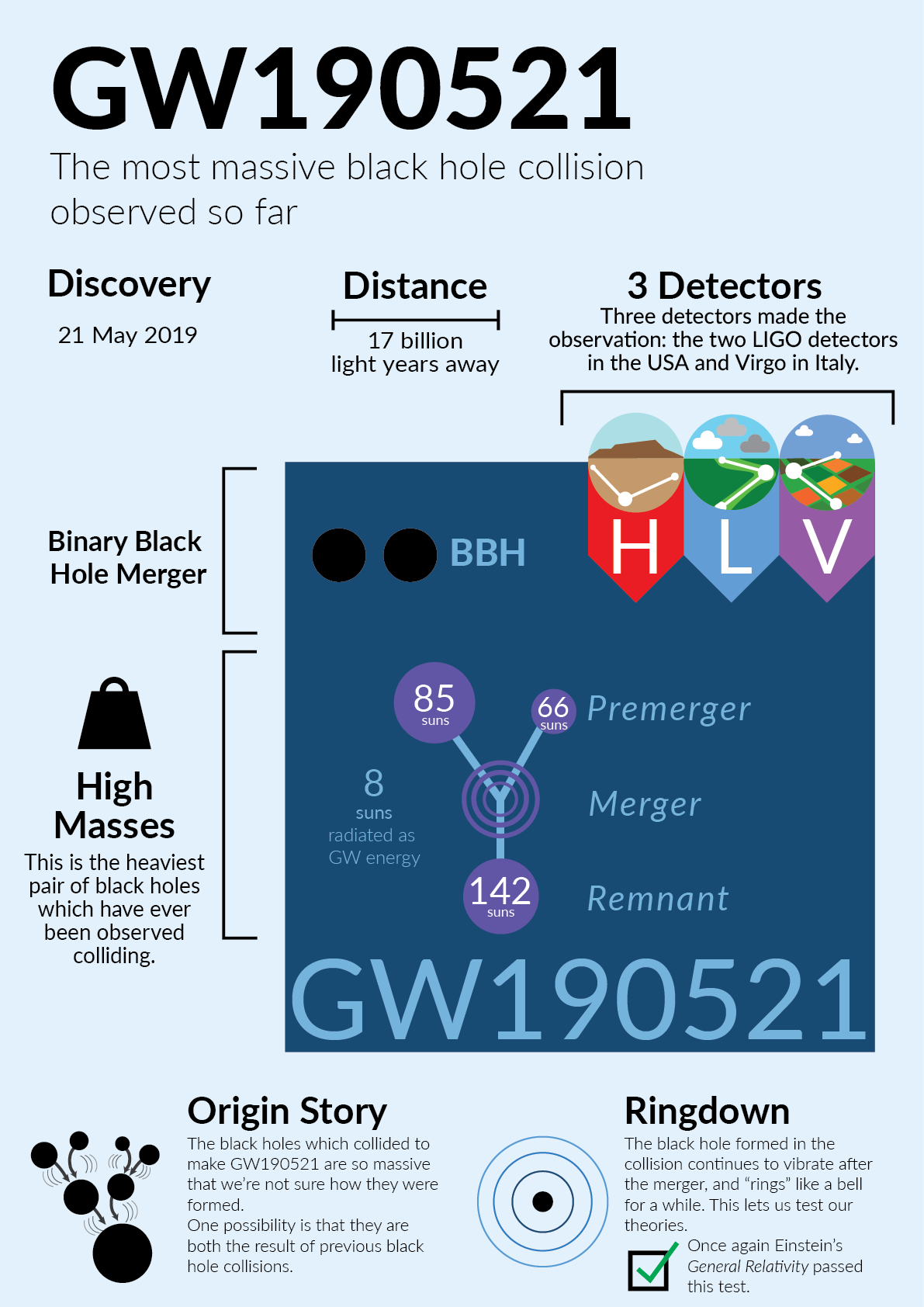Link to GW190521 publications: Detection paper, Astrophysical implications paper
What is the GW190521 event?
The GW190521 event is the gravitational wave signal emitted during the collision of two black holes of mass 85 and 66 times the mass of our Sun in the binary system, forming a remnant black hole of mass 142 times the mass of the Sun. This signal travelled for the distance of 17.2 billion light years through the expanding Universe. This is the most distant gravitational wave signal observed so far by the gravitational wave detectors.
In a compact binary system (See figure below), the two black holes inspiral, coming ever closer to each other, culminating in a massive collision and emitting a burst of gravitational waves. At the end, the system settles into a single final black hole. This signal has three phases — inspiral phase, merger phase and ringdown phase. Heavier binary systems pass quickly from our detector’s lowest detectable frequencies to coalescence, giving rise to shorter signals. The observed duration of the signal from GW190521 was 0.1 sec.

What makes GW190521 an interesting event?
- The final black hole is not only the most massive black hole amongst all the LIGO-Virgo black holes detected so far [See. Fig 3] but also the first intermediate mass (100–100,000 times that of the Sun) black hole observed by the LIGO-Virgo detectors.
- Originating from a collision of two particularly massive black holes, the event gave a unique opportunity to test Einstein’s General Theory of Relativity.
- This extraordinarily heavy pair of stellar mass black holes in the binary system challenges our understanding of the formation of the black holes.
Heftiest Merger Seen Yet
Making big black holes
They are thought to be the end stages of massive stars and formed by the gravitational collapse after undergoing the volatile supernova explosion phase. Astrophysical models suggest that black holes with masses between about 65 and 120 times the mass of the Sun cannot be formed by a collapsing star. This mass range is termed as the ‘’mass gap”.
The other end of the black hole mass range are “supermassive black holes” with masses above hundreds of thousands to billions of times that of the Sun. Our own Milky Way galaxy has a black hole of 4 million times the mass of the Sun at its centre. Exactly how these monstrous black holes are formed remains a bit of mystery.

Numerical simulation of a heavy black-hole merger (GW190521)
Numerical simulation of two black holes that inspiral and merge, emitting gravitational waves. The black holes have large and nearly equal masses, with one only 3% more massive than the other. The simulated gravitational wave signal is consistent with the observation made by the LIGO and Virgo gravitational wave detectors on May 21st, 2019 (GW190521). Details on the visualization: * The „apparent horizon“ of the black holes in the simulation are shown in black. At 0:10 the simulation finds an enveloping apparent horizon that signals the two black holes have merged. * The gravitational radiation is translated to colors around the black holes. The colors transition from blue, representing weak radiation, to red, representing strong radiation. Specifically, the coloring represents the real part of the gravitational wave strain. The strain is computed from the simulation’s extrapolated waveform, which is shown at the bottom of the screen. * Only the mass-ratio of the two black holes is relevant for the numerical simulation, not their total mass. The large total mass inferred for the black holes that produced the GW190521 signal only affects the conversion from simulation-time to real-time that is shown at the bottom of the screen. The movie shows approximately half of the observed inspiral duration reported for the GW190521 detection. Credit: N. Fischer, H. Pfeiffer, A. Buonanno (Max Planck Institute for Gravitational Physics), Simulating eXtreme Spacetimes (SXS) Collaboration
Indian contribution to the discovery
Testing the gravity with GW190521
Important source for LIGO-India
A rich legacy
Indian scientists have made pioneering contributions to the gravitational-wave science over the last three decades. In particular, they have contributed to the fundamental algorithms crucial to search for inspiraling binaries in noisy data from multiple detectors, in computing the theoretical waveforms of GW signals by solving Einstein’s equations, in separating astrophysical signals from numerous instrumental and environmental artefacts, in the interpretation of joint gravitational-wave and gamma-ray observations, tests of Einstein’s theory and many other aspects of the data analysis.


